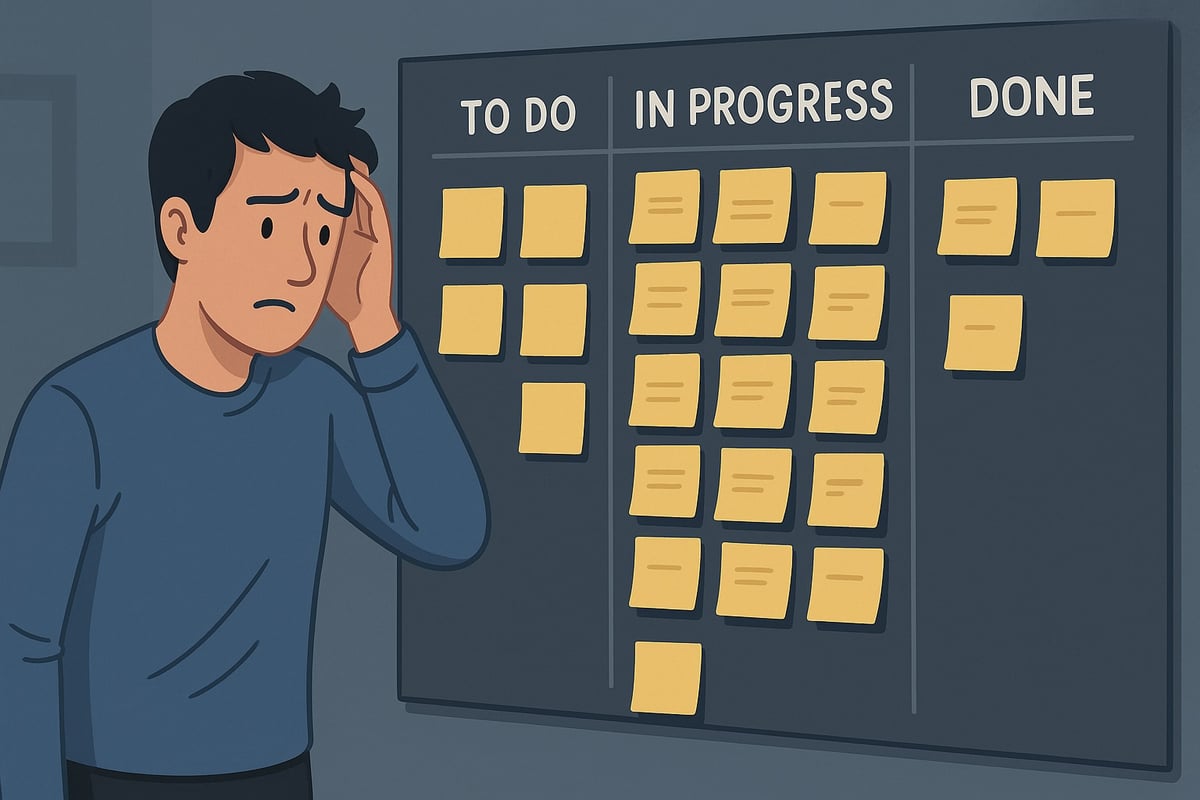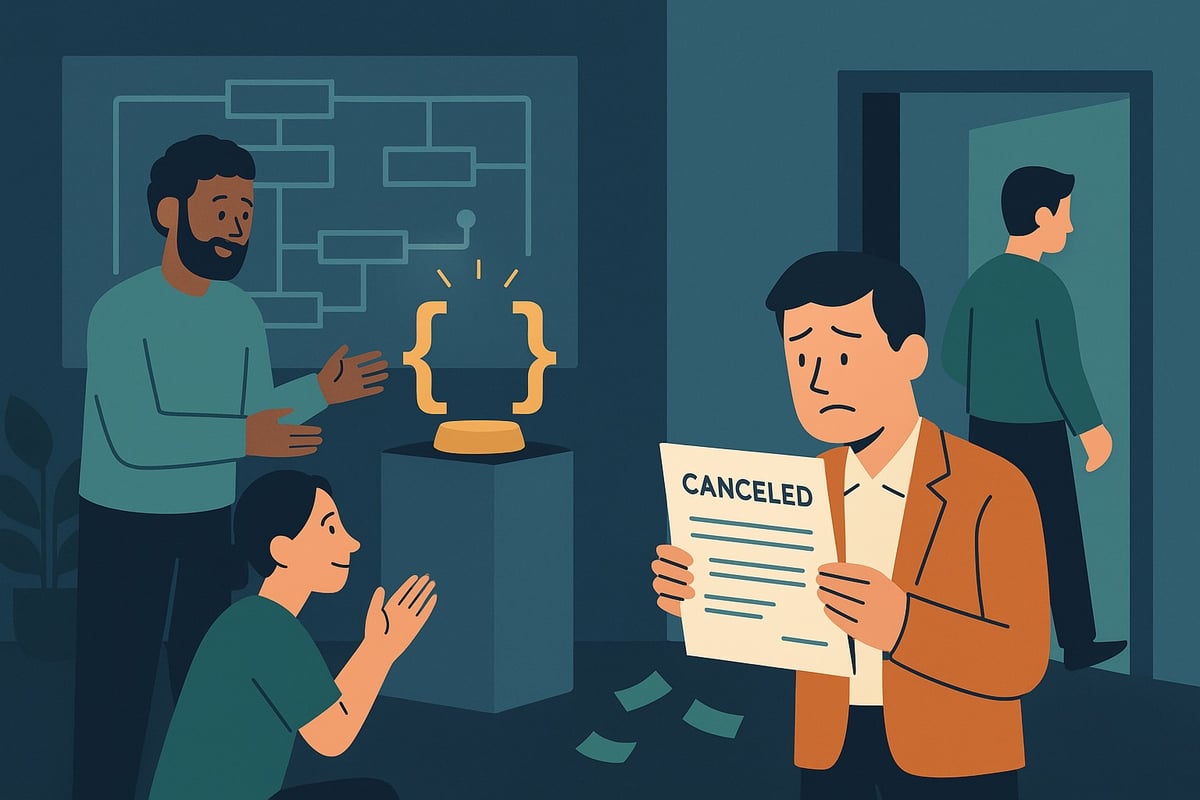Here’s the uncomfortable truth: Most engineering leaders are flying blind when it comes to team sizing.
GitHub runs with engineering at 37% of total headcount. JPMorgan Chase? They’re at 13% tech employees out of their 256,000 employees. Both are wildly successful. So what’s the right number for YOUR team?
Here’s the thing: There isn’t one.
Engineering headcount isn’t about following Silicon Valley wisdom or copying what worked at Google. It’s about aligning your team size with your specific business strategy. And most leaders get this backwards.
The Four States of Engineering Teams
Before we talk numbers, let’s diagnose where you are right now. According to Will Larson’s framework, every engineering team exists in one of four states:
- Falling behind: Work arrives faster than you can complete it
- Treading water: You’re keeping up, but barely
- Repaying debt: You can tackle technical debt alongside features
- Innovating: You have slack for quality improvements and exploration
You know that sinking feeling when sprint planning becomes a negotiation about what to drop? That’s “falling behind.” The nervous laughter when someone mentions refactoring? Classic “treading water.”
Here’s what most leaders miss: Your team’s state reveals whether you need more people or a better strategy. Sometimes the answer isn’t hiring though, it’s focus.
The Growth vs. Maintenance Decision
The fundamental choice that drives everything else is this: Are you in growth mode or maintenance mode?
This isn’t about ambition. It’s about market reality, funding status, and business objectives. And the numbers change dramatically based on your answer.
Early-Stage Reality (< 50 employees)
In growth mode, engineering should comprise 50-70% of your total headcount. Fred Wilson’s proven formula? Start with 3-4 engineers, 1 PM, and 1 designer. That’s it.
Why so engineer-heavy? Because at this stage, you’re building product, not empire. Every non-engineering hire better have a damn good reason to exist.
The Scale-Up Shift (50-500 employees)
Watch what happens at Series B. Engineering drops to 30-50% of headcount in growth mode.
This is where things get interesting. David Sacks’ breakdown shows the new reality:
- ~40% R&D (including engineering)
- ~50% Sales & Marketing
- ~10% G&A
The shift isn’t because engineering matters less. It’s because you need an engine to sell what engineering builds.
Enterprise Evolution (500+ employees)
Growth-focused tech companies stabilize with engineering at 20-30% of total headcount. Traditional enterprises in maintenance mode? They drop to 5-15%.
The gap between GitHub (37%) and JPMorgan Chase (13%) suddenly makes sense. Different strategies, different structures.
The Magic Ratios That Actually Work
Let’s get specific. After analyzing hundreds of teams, clear patterns emerge:
Manager to Engineer: The 1:6-8 Sweet Spot
- Fewer than 6 reports? You’re wasting management capacity
- More than 8? Your 1-on-1s become drive-bys
- The absolute limit? 10-12 for experienced managers only
Cross-Functional Balance
- 1 PM to 5-8 engineers: Below 5, your PM is underutilized. Above 8, features ship without strategy
- 1 designer to 8-10 engineers: This ratio keeps your products from looking like they were designed by… well, engineers
- Data to engineer ratio: 0.13x (industry median): Enough to make decisions, not enough to cause analysis paralysis (Source: Medium)
The Team Size Trap Warning: Teams smaller than 4 people aren’t teams, they’re buddy systems. They’re too fragile for on-call rotations, too small for effective collaboration, and one vacation away from crisis.
The minimum viable on-call rotation? 8 engineers. Anything less and you’re burning people out.
When to Scale Up vs. When to Optimize
Stop guessing. Here are the clear signals:
Scale Up When:
- Product-market fit achieved (revenue growing faster than team capacity)
- Teams consistently in “falling behind” state despite good processes
- New market or product expansion on the horizon
- Your ARR per employee exceeds benchmarks:
- Series A: > $25K
- Series B: > $50K
- Series C: > $67K
- IPO ready: ~$100K
Pump the Brakes When:
- Technical debt is overwhelming innovation capacity
- Market conditions demand profitability over growth
- Your ratios are way off (like 1 manager to 15 engineers)
- Teams are “treading water” due to process issues, not capacity
Remember: New hires need time to ramp up and become fully productive. Plan accordingly.
The Pitfalls That Kill Productivity
I’ve seen these mistakes destroy otherwise great teams:
-
The Zombie Team Problem: Creating 2-3 person “teams” that can’t sustain themselves. They’re not agile; they’re fragile.
-
The Manager Overload: That superstar manager handling 12 direct reports? They’re not super, they’re drowning. And their reports know it.
-
The Early-Stage Sales Surge: Growing sales faster than engineering in the early stage. Congrats, you’ve built a sales team with nothing to sell.
-
The Maintenance Mode Massacre: Cutting engineering to 5% because “the product is done.” Spoiler: Software is never done. Your competitors thank you for the opportunity.
The Bottom Line
Your company strategy should drive your engineering headcount, not the other way around.
Start here:
- Assess your current state using Larson’s four states model
- Define your business strategy (growth vs. maintenance)
- Calculate your optimal ratios based on the benchmarks above
- Plan your transitions with realistic timelines
Pick one ratio that’s out of whack. Fix that first. Building high-performing engineering teams isn’t about hiring fast, it’s about hiring smart.
The only question: Will you keep guessing at team size, or will you finally align your structure with your strategy?








